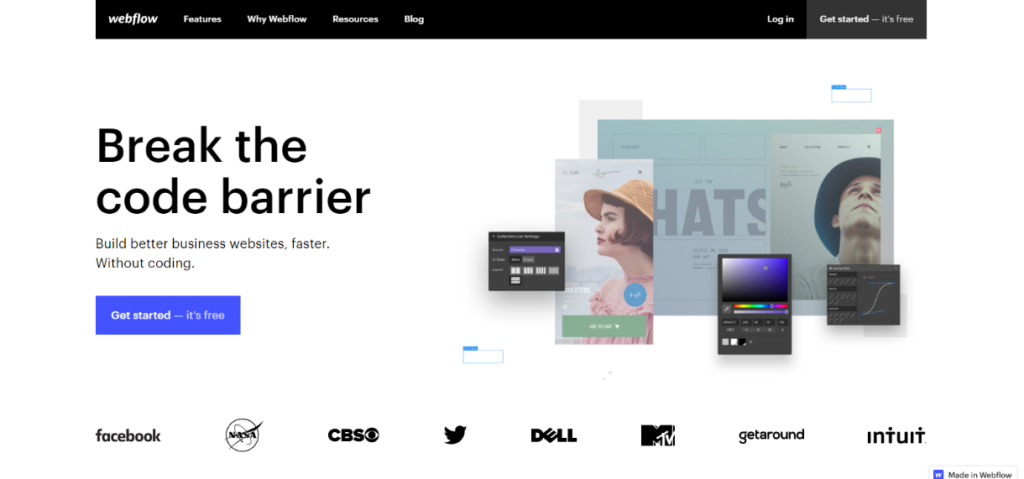One tool in particular stands out as a game-changer in web design, where creativity and functionality meet: Webflow. We’ll get into the core of Webflow in this article, going over its features, advantages, and target audience. Together, we will navigate the world of Webflow, from overcoming obstacles to utilizing its essential capabilities.

What is Webflow?
Webflow has become a powerful competitor in the web design space by providing a web-based design tool that enables users to create, build, and publish responsive websites without having to deal with the technicalities of coding. It’s an exceptional platform that fills the void between the widely used content management system, WordPress, and more conventional builders like Squarespace and Wix. It’s not just another generic website builder. Webflow is known as the next-generation website-building solution because of its user-friendly interface, lightning-fast performance, and flexible design options.

Webflow For whom is it meant?
Webflow’s broad appeal is what makes it so beautiful; it can be used by both experienced professionals and beginners. Regardless of your level of experience with web design or lack of coding knowledge, Webflow offers a platform that can be easily customized to meet your requirements.

Obstacles & Essential Elements
There are differences between mockups and actual implementations because of the traditional web design workflow’s constant differences between design and development. Let me introduce you to Webflow, a design process paradigm shift. In contrast to its competitors, Webflow allows users to easily combine coding and visual design, enabling them to transform their artistic ideas into interactive online experiences. Prioritizing design thought while expediting the production process, Webflow incorporates design trends like scrolling parallax and multi-step animations into its capabilities, such as reused CSS classes.
E-commerce features
Another highlight is the e-commerce functionality, which allows users to interact with social media stores, accept payments through a variety of payment methods, and guarantee excellent security through SSL encryption and automated backups.

Hosting
With its unparalleled hosting capabilities, Webflow provides blazingly quick page loads and the peace of mind that comes with never having to worry about server maintenance. Users may get crucial services like site search, HTTP/2 compliance, free SSL certificates, and automatic backups with hosting options starting at $15 per month. Although not the most affordable choice available, Webflow’s all-inclusive hosting services offer unmatched dependability and efficiency.

Benefits:
1)An intuitive interface that is appropriate for both novices and experts.
2)coding and visual design are seamlessly integrated, speeding up the development process.
3)extensive e-commerce capabilities for internet-based companies.
4)dependable hosting with important security measures and quick website loads.
5)Several choices for customizing the design, enabling the creation of distinctive and eye-catching websites.
Negatives:
1)greater learning curve in contrast to more basic website builders.
2)Fewer third-party integrations than on platforms with greater experience.
3)Some customers may find the pricing to be burdensome, particularly when it comes to hosting packages and advanced services.
Conclusion
To sum up, Webflow is a catalyst for innovation rather than merely a tool. You can easily display your projects, bring your creative ideas to life, and optimize your design process with Webflow. Regardless of your role as a freelancer, agency, or business owner, Webflow provides an affordable, easy, and powerful solution. So when you can personally experience it, why talk about it? Explore Webflow to discover the countless opportunities in web design today.
Looking to hire a webflow developer: Check out these services
